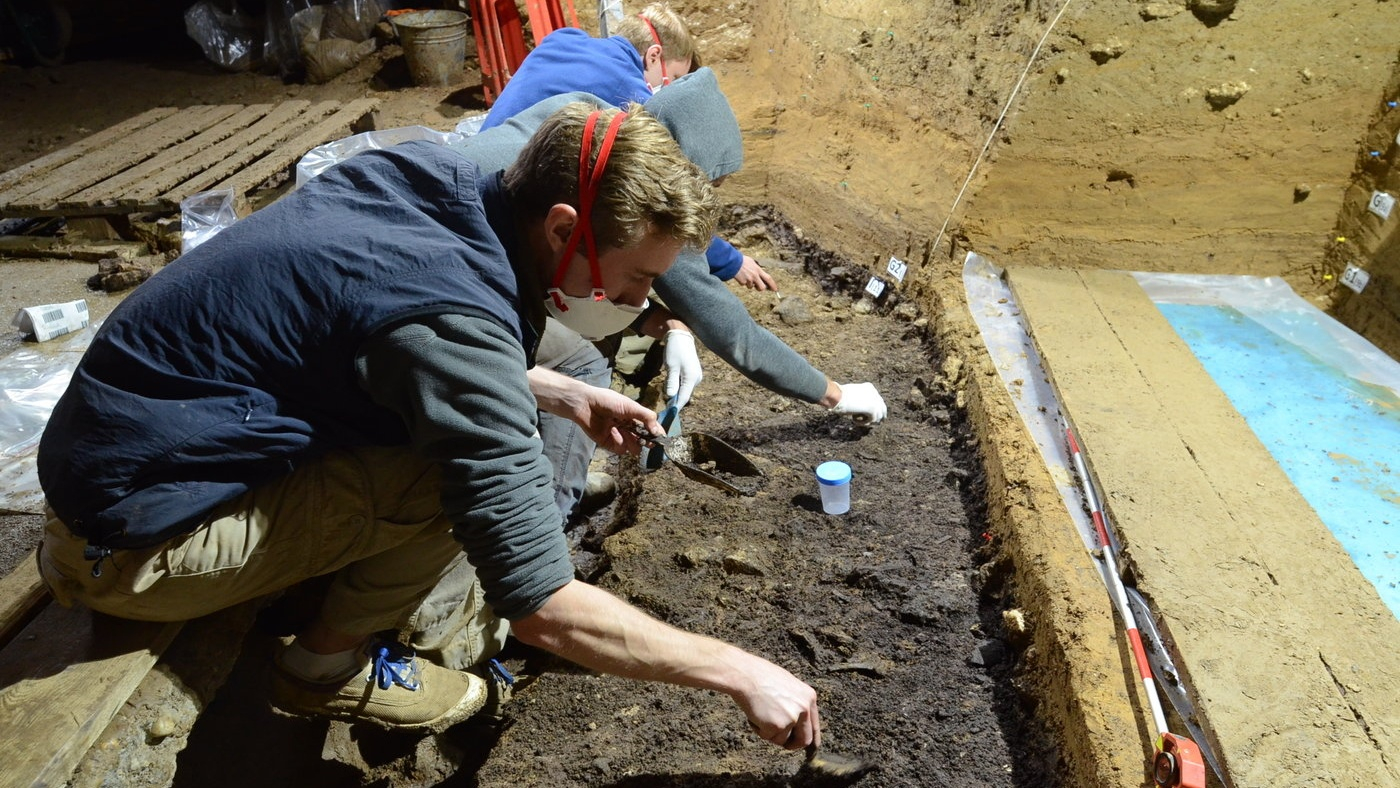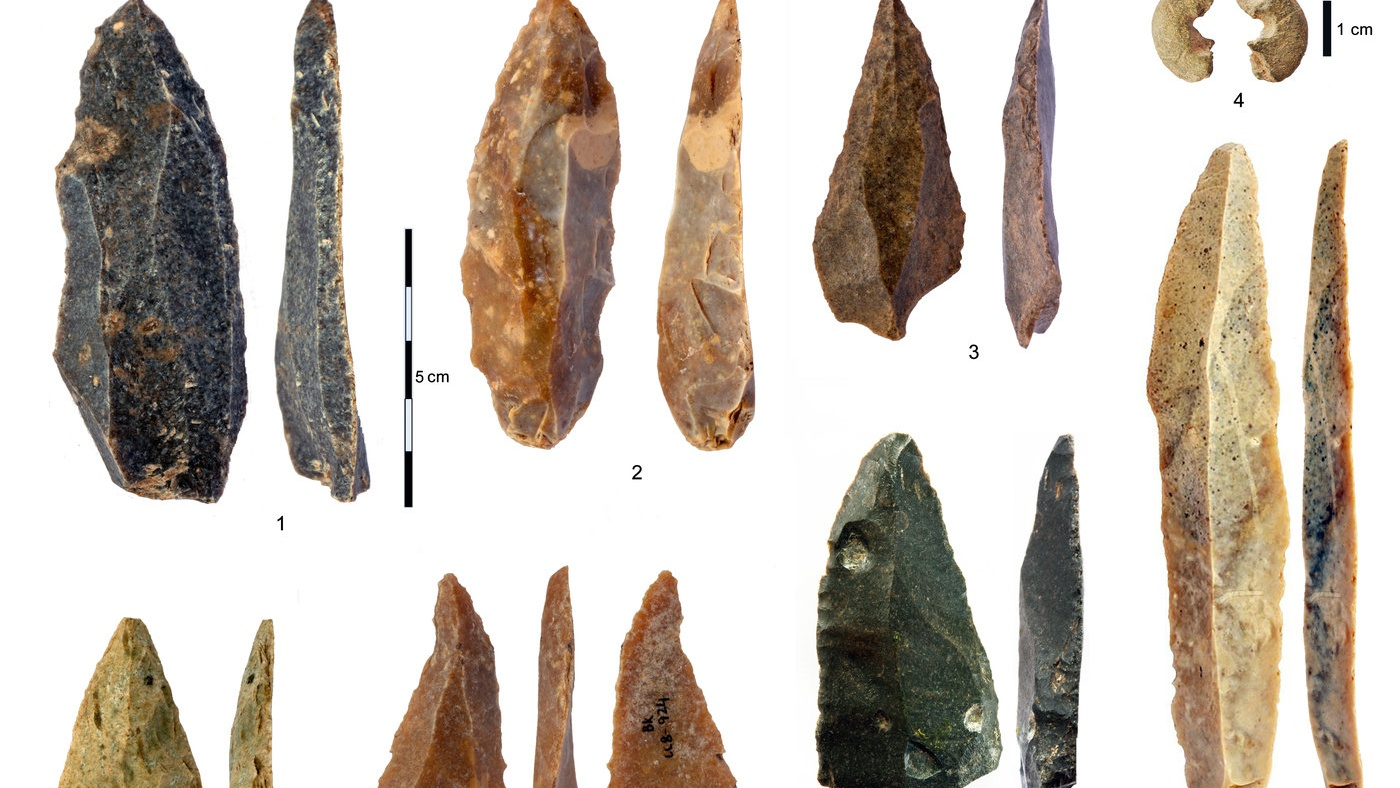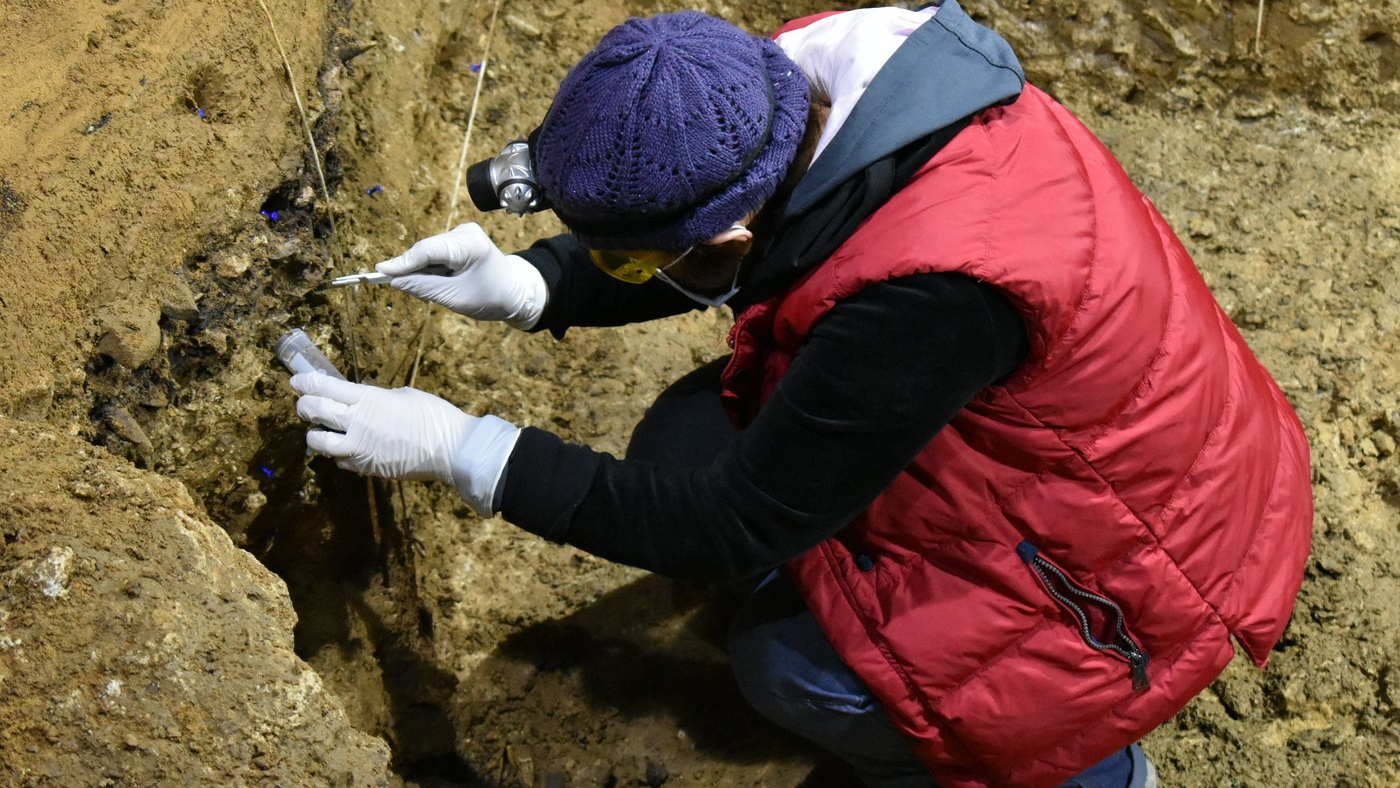
The fossils were retrieved from the Bacho Kiro cave in Bulgaria. /Handout/Tsenka Tsanova
The fossils were retrieved from the Bacho Kiro cave in Bulgaria. /Handout/Tsenka Tsanova
Scientists have retrieved bone fragments and a tooth from a cave in Bulgaria that show modern humans may have arrived in Europe thousands of years earlier than previously thought.
The detailed radiocarbon and DNA tests from fossils found in the Bacho Kiro cave showed the bones belonged to Homo sapiens and were 43,000 to 46,000 years old.
"Given the exceptionally good DNA preservation in the molar and the hominin fragments identified by protein mass spectrometry, we were able to reconstruct full mitochondrial genomes from six out of seven specimens and attribute the recovered mitochondrial DNA sequences from all seven specimens to modern humans," said Mateja Hajdinjak, a postdoctoral fellow at the Francis Crick Institute in London and research associate at the Max Planck Institute for Evolutionary Anthropology in Leipzig, Germany.

Artefacts gathered from the site included stone and bone tools and pendants. /Handout/Rosen Spasov and Geoff Smith
Artefacts gathered from the site included stone and bone tools and pendants. /Handout/Rosen Spasov and Geoff Smith
The research, published in the journal Nature alongside a second study in Nature Ecology & Evolution, also give credence to the view that an amazing array of artefacts recovered from the same site, including stone and bone tools and pendants, were made by the early humans and can be linked to similar findings as far east as Mongolia.
Experts said this would push back the date of the first arrivals of Homo sapiens in the continent – until then, a bastion of the Neanderthals – by thousands of years. A milestone in the history of a species that traces its origins to Africa, about 300,000 years ago, before spreading across the globe.
"The Bacho Kiro cave site provides evidence for the first dispersal of Homo sapiens across the mid-latitudes of Eurasia. Pioneer groups brought new behaviors into Europe and interacted with local Neanderthals," said Jean-Jacques Hublin, director at the Max Planck Institute.

Radiocarbon and DNA tests showed the bones belonged to Homo sapiens and were 43,000 to 46,000 years old. /Handout/Nikolay Zahariev
Radiocarbon and DNA tests showed the bones belonged to Homo sapiens and were 43,000 to 46,000 years old. /Handout/Nikolay Zahariev
Neanderthals – the closest ancient relatives of humans – had been inhabiting Europe for hundreds of thousands of years. Hubin believes the two groups coexisted for around 8,000 years before the Neanderthals became extinct.
The reasons behind their extinction is shrouded in mystery. One plausible theory is that they got wiped out by the humans after thousands of years of interaction, even interbreeding, which left an indelible mark on the human genome.